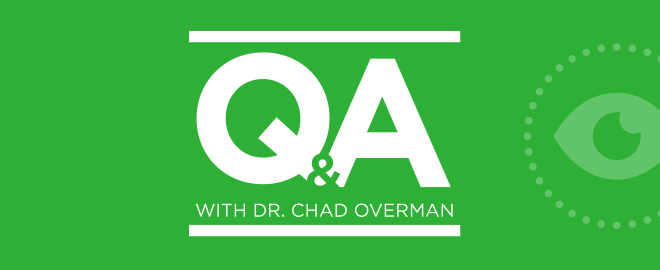Vision viewpoints: What is nearsightedness (Myopia)?
Posted on July 2, 2024 in Healthy You

Myopia is the medical term for nearsightedness, which is a common vision condition that makes distant objects appear blurry. People with myopia can see clearly close up, but things look fuzzier when they’re far away.
Symptoms of myopia often include squinting to see better, headaches from eye strain and difficulty seeing road signs or recognizing faces that are far away. Dr. Chad Overman, Delta Dental of Iowa’s medical expert for DeltaVision®, answers questions about nearsightedness and how you can prevent it from worsening.
Q: Are there any specific age groups that are more prone to developing myopia, and if so, why?
Dr. Overman: We are more concerned with children developing high amounts of myopia. Adults tend to slow or stop myopia progression in our 20s, so we focus on kids because high degrees of myopia can lead to health concerns.
Q: What are some of the health concerns linked to myopia?
Dr. Overman: People with nearsightedness are at higher risk for retinal detachments and other retinal problems (the retina is a layer of tissue in the back of the eyeball). That’s why it’s important to have regular eye exams and discussions with your eye doctor if you have myopia. The frequency of your eye exams depends on your specific eye health and medical history, and your eye doctor will discuss how often you should have your vision checked.
Q: How is myopia diagnosed by an eye doctor, and what tests are usually involved?
Dr. Overman: Your eye doctor has a few ways to test the clarity of your eyesight. You may be asked to read letters on a chart 20 feet away. This test measures the sharpness of your eyesight (this is known as visual acuity), and the result is a fraction, such as 20/20 or 20/40 vision.
Another way we diagnose nearsightedness is by using an instrument called a phoropter. With a phoropter, the doctor will place lenses in front of your eyes and ask you which lens provides a clearer picture. This will help your doctor understand the power of your eyes and help craft your corrective prescription.
Q: What are the different treatment options available for myopia?
Dr. Overman: Although myopia is technically not a disease, we want to manage the degree of nearsightedness to protect the person’s health as they age and prevent the myopia from progressing. People with nearsightedness have several options to sharpen their long-range vision. The most common are eyeglasses, contact lenses and LASIK surgery. After your myopia has been diagnosed, your doctor will talk through all the options with you.
Q: What are the pros and cons of each treatment option, and how do I decide which one is right for me?
Dr. Overman: Lifestyle choices really matter when deciding how to treat your nearsightedness. For example, people who do a lot of sports or regularly engage in physical activity may prefer contacts over glasses. Children may use glasses or contacts to correct their vision, but LASIK is a treatment available only for adults.
Q: What are some tips for managing myopia in daily life?
Dr. Overman: Especially for children, it’s important to decrease screen time on tablets, TV and video games and get outside more to play to prevent myopia from worsening. Adults should also take frequent breaks, as increased near work (like staring closely at a device) worsens myopia.
SOURCE:
American Optometric Association